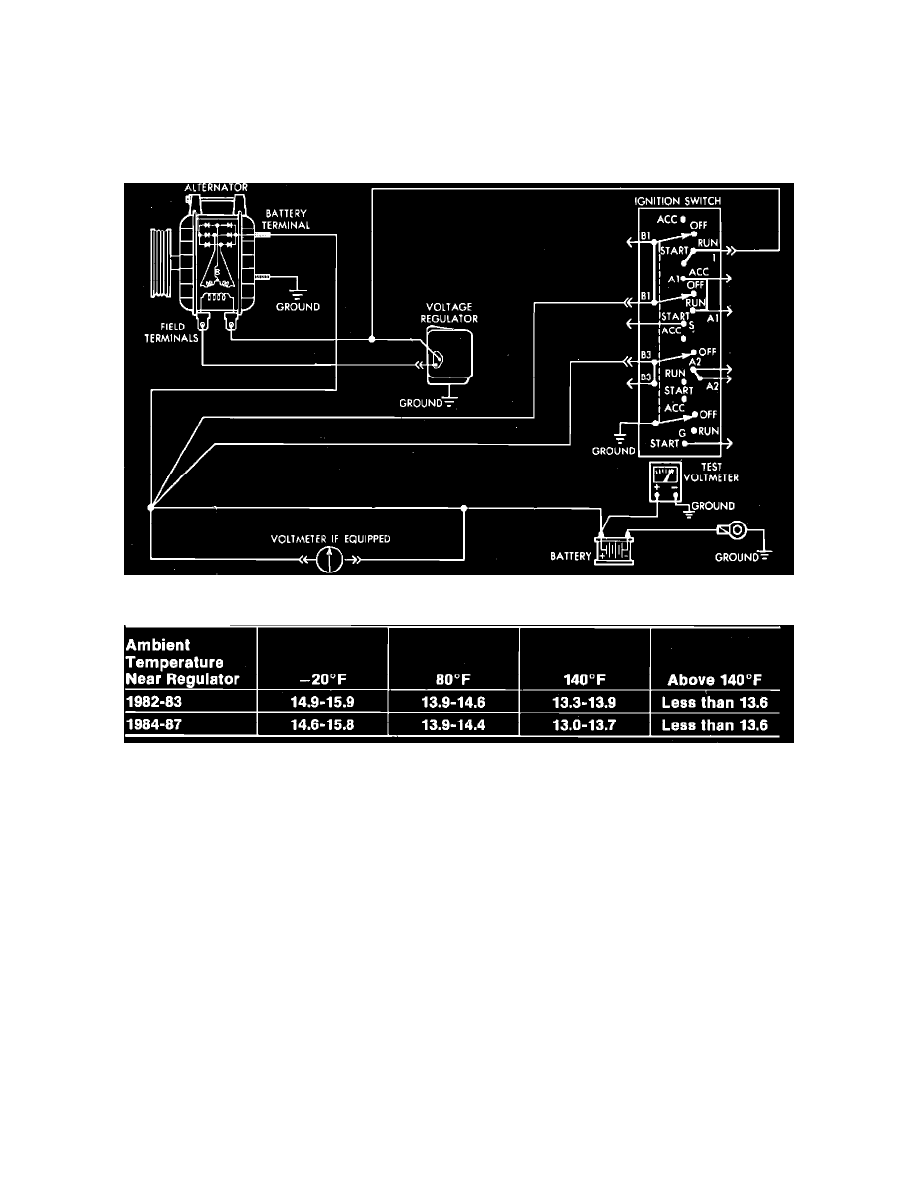Lebaron Convertible L4-134 2.2L VIN C 2-bbl (1984)

Voltage Regulator: Testing and Inspection
Chrysler Alternator & Regulator
Battery must be fully charged for test to be accurate.
When testing alternators except 100 and 114 amp units, use a 0---100 amp ammeter. When testing 100 and 114 amp alternators, use a 0---150
amp ammeter.
Fig. 11 Voltage regulator test. 1984---87 exc. units w/regulator in engine electronics
Fig. 12 Voltage regulator test specifications
EXC. UNITS W/REGULATOR CONTROLLED BY ENGINE ELECTRONICS
1.
Connect test equipment.
2.
Start and run engine at 1250 RPM with all lights and accessories turned "Off." Voltage should be as specified.
3.
It is normal for the vehicle ammeter to indicate an immediate charge, then gradually return to the normal position.
4.
If voltage is below limits or is fluctuating, proceed with the following:
a. Check voltage regulator for proper ground. The ground is obtained through the regulator case to mounting screws, then to the vehicle sheet
metal.
b. With ignition switch "Off," disconnect voltage regulator connector. Turn ignition "On" and check for battery voltage at the wiring harness
terminal. Both green and blue leads should have battery voltage.
c. If voltage regulator was grounded properly and battery voltage was present at the green and blue leads, replace voltage regulator except on
systems incorporating a field-loads relay. On systems with a field-loads relay, test the relay as outlined under "Field-Loads Relay Test." If
relay tests satisfactory, replace voltage regulator. On all systems, repeat test.
5.
If voltage is above limits, refer to Steps 4b and 4c.
UNITS W/REGULATOR IN-ENGINE ELECTRONICS
Voltage regulator is controlled by Electronic Control Unit.
